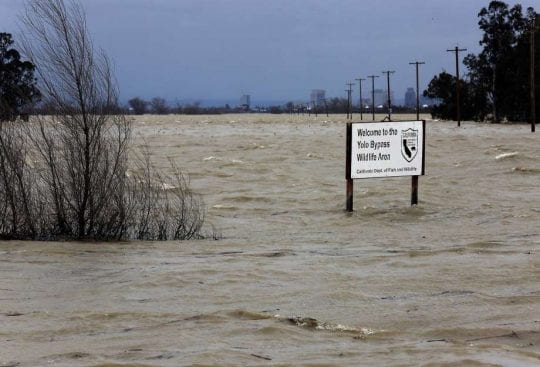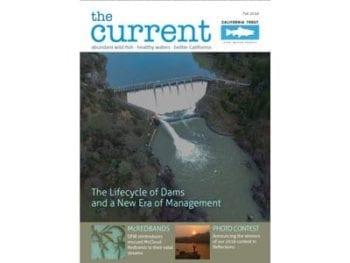Yolo Bypass weathers the storm

Michael Macor, The Chronicle
With the onslaught of storms across California, much attention has been focused on the safety and reliability of our aging dams and water infrastructure. It also has dam advocates calling for more surface storage to catch all this water before it’s “flushed out to sea.” Reporter Carolyn Lochhead in today’s San Francisco Chronicle looks at how “Dams remain in line for bulk of funding over cheaper alternatives.”
Just downstream from Oroville Dam, the article states, lies “one of the state’s oldest, cheapest and simplest flood control devices is performing brilliantly. The Feather River’s raging floodwaters that damaged Oroville’s two spillways and led to the evacuation of 188,000 people have now spread out across a peaceful, shallow lake called the Yolo Bypass, operated by a simple weir, and are now recharging the aquifer. It is attracting birds and brimming with salmon, smelt and other endangered fish.”
Lochhead spoke with California Trout’s Central Valley Senior Scientist Jacob Katz who shared this perspective,
What the crisis at Oroville Dam really makes clear is that a system made out of concrete, to rigidly confine and constrain nature, is always going to be brittle. People have been so focused on concrete that it’s taken a long time to realize that working with nature rather than against it is much safer and much more profitable.”
In addition to pointing out the benefits of natural water storage such as the Yolo Bypass, the article highlights many of the drawbacks to dams. “Dams store a lot of water and control floods, but they also have big drawbacks, many of which were poorly understood when the state’s existing structures were built. By blocking rivers, dams are ruinous to fish and other wildlife, and impair the recharge of downstream aquifers. Evaporation losses are high and getting higher as temperatures warm. Dams have limited lifespans and are extremely expensive.”
 CalTrout recently wrote about this very topic – the lifecycle of dams, and profiled three dam removal/evaluation projects we’re involved with in The Current. You can read that story here.
CalTrout recently wrote about this very topic – the lifecycle of dams, and profiled three dam removal/evaluation projects we’re involved with in The Current. You can read that story here.
To read the full San Francisco Chronicle story click here.




